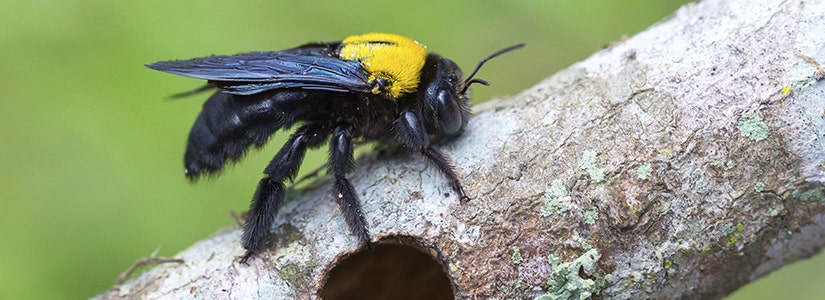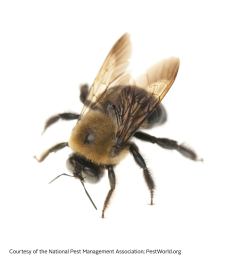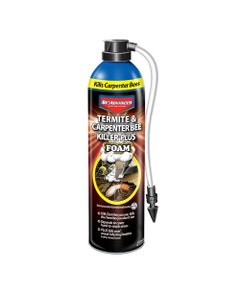

- Home
- Solution Center
- Learn
- Outdoor Pests
- Carpenter Bee Killer
Carpenter Bee Killer
Carpenter Bees prefer unpainted and weathered wooden objects such as doors, windowsills, roof eaves, railings, decks, untreated poles, fences and wooden lawn furniture. In some cases, they will attack stained or painted wood. Carpenter Bees can cause structural damage over time if left untreated. Although their loud buzzing and large size can be alarming, male Bees do not sting and females sting only when handled.
What do Carpenter Bees look like?

Carpenter Bees look like typical bumblebees but often lack yellow stripes,and their abdomen is bare and shiny.
Color: Creamy white to dark brown/black
Legs: 6
Shape: Oval and robust
Size: ¼-1 inch long
Antennae: Yes
Region: Carpenter Bees are found throughout most of the United States.
Where do Carpenter Bees live?
Carpenter Bees do not live in nests or colonies. Female Carpenter Bees bore circular holes through soft wood to lay their eggs.
What do Carpenter Bees eat?
Carpenter Bees do not eat wood but do feed on plant pollen and nectar.
What are the signs of a Carpenter Bee infestation?
- Bees entering and leaving holes in decks, posts, beams, rafters and other wooden structures.
- Tunnel openings one or two inches deep.
- Sawdust on the ground under where holes are drilled.
- Yellow pollen and bee excrement near the entrance hole.
- Partitioned galleries in damaged wood.
How can Carpenter Bees be controlled and prevented?
- Paint wood surfaces each year to prevent Bee tunneling.
- Treat galleries in exposed wood with BioAdvanced Termite & Carpenter Bee Killer Plus Foam.
- After Bees have emerged, close holes with putty, caulking compound or plastic wood to prevent Bees from returning to the nest.
- Protect rough areas, such as ends of timbers, with wire screening or metal flashing.













